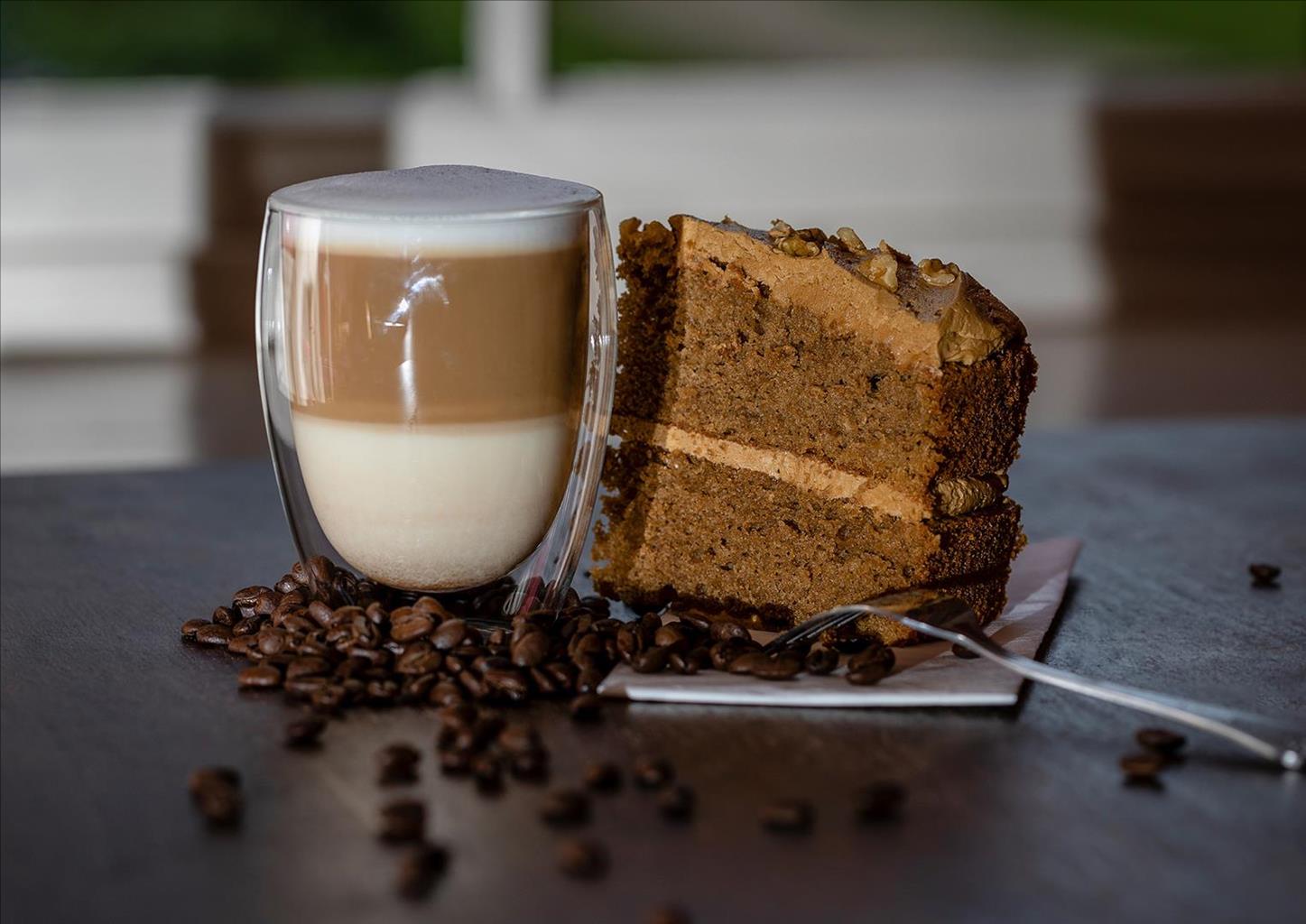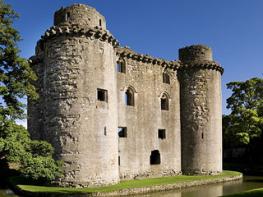Set in the beautiful grounds of Stourhead House with its Palladian temples, lakes and inspiring…
Coneygore Hill and Cucklington

Up and down the hill in deepest Somerset, taking in a church with over a thousand years of history.
5.5 miles (8.8kms)
About the walk
Throughout the Middle Ages sheep brought increasing prosperity to Somerset. For the merchants, spinners and clothiers, there was no better way to spend their wool money than in glorifying God. With the monasteries becoming ever richer and less religious, the good Somerset yeoman preferred to praise God and improve his village by making a donation to his parish church.
Somerset churches
So, in every corner of the county, in the Norman style or in the sturdy simplicity of the English Gothic, there rose the church towers of Somerset. By the end of the 12th century there were nearly 500 of them. The towers of yellow limestone rose above thatched villages, cornfields and green fields. They provided waymarkers for wanderers among the ditches and reed beds. The church ale, or fundraising party, was the main social event of the village. ('Ale' is an archaic word for festival, at which this liquor was drunk.)
Early English and Decorated
The Norman style of church is recognisable by its round arches. Few such churches have survived in England. Many of the later churches, including Cucklington, retain their Norman font. The Early English is the beginning of the Gothic, pointy-arch style. The windows are single and narrow, called 'lancets'. Interior decoration often uses the polished, pale-grey limestone from Dorset known as Purbeck marble. Wells Cathedral, with its ornate front and breathtaking inverted arch is the crowning glory of the Early English style. The Gothic was essentially a new way of building stone structures that didn't fall down. As the builders got more skilful, they were able to leave out more of the stone.
From about 1300, the style called Decorated has compound windows, in three or five panels, like the west window at Cucklington. Somerset has few Perpendicular churches; a rare example is seen in St Barbara's Chapel in Cucklington. St Barbara herself, patron saint of hills, was shown locked up in a tower by her heathen papa. In fact Cucklington church was built and rebuilt over several centuries – study it closely and it's a history of the last thousand years. St Barbara's Chapel was a chantry, where prayers were said for some rich benefactor. Around 1500 such short-cuts to heaven were deemed unseemly, and the chapel was incorporated into the body of the church. Unfortunately the people in the chapel couldn't see the priest, so they built the peculiar peephole that's called a hagioscope or squint. The church owes its feeling of space and simplicity to the wrecking activities of the Puritans. There is a colourful and enthusiastic royal coat of arms, painted at the restoration of Charles II. The roof was put back on again after the great storm of 1705.
Walk directions
With the A303 on your right, walk on along the lane to where a track runs ahead into a wood. At its far side a fenced footpath runs near the main road. It turns up left as a sunken path, then right into a fenced-in path that bends round to the left to reach Parkhouse Farm. After an uncomfortably nettly passage (in summer) to the left of the buildings, turn again left to a lane.
Turn right along the lane to Stoke Trister. At the T-junction (returned to later in the walk) take the lane up right, to pass Stoke Trister church.
Continue for 170yds (155m) to a stile and gate on the left. Go up a track, but turn right alongside the hedge above, passing a mobile phone mast on your right. Follow the hedge around the rim of Coneygore Hill, over one stile, to a second with a wide view ahead.
Head straight down towards Stileway Farm. But half-way down, turn left and contour across fields to a stile, then contour forward to another with cattle trough and gate below. Turn uphill, with the hedge now on your left, to the steeper bank around Coneygore Hill. Turn right and follow the foot of this banking to cross a stile. Keep level through a tree gap, then slant down to the right, below a tiny vineyard, to reach a stile behind. The path ahead contours forward to the lane junction in Stoke Trister.
Turn downhill past a thatched cottage, to a gate and signpost on the left. (In winter or after much rain, just use this lane to cross the valley and climb to Cucklington village.) Head downhill towards Cucklington church, crossing stiles to a small stream and footbridge. After the next stile, cross one field diagonally, then the left edge of the next, to join the lane up into Cucklington. A gravel track on the left leads to Cucklington church.
Pass to the left of the church, and contour across two fields, passing above Cucklington Wood. In the third field slant up to the right to join a track, which leads to Clapton Farm.
After the Tudor manor house the track bends right, uphill. Turn left between farm buildings to a gate beside a phone mast, and then turn left again down a wooded bank. Turn right, along the base of the bank, to a gap in a grown-out hedge. Now bear left past a power pole to the field's bottom corner. Cross a footbridge under hazels to a stile beyond. Then, go straight up to a stile by a cattle trough and the lane you parked on.
Additional information
Little-used field paths, which may be overgrown, many stiles
Small hills grazed by cows
Route over pasture so on lead or under close control
OS Explorer 129 Yeovil & Sherborne
Lay-by on former main road immediately south of A303
None on route
WALKING IN SAFETY
Read our tips to look after yourself and the environment when following this walk.
Find out more
Also in the area
About the area
Discover Somerset
Somerset means ‘summer pastures’ – appropriate given that so much of this county remains rural and unspoiled. Ever popular areas to visit are the limestone and red sandstone Mendip Hills rising to over 1,000 feet, and by complete contrast, to the south and southwest, the flat landscape of the Somerset Levels. Descend to the Somerset Levels, an evocative lowland landscape that was the setting for the Battle of Sedgemoor in 1685. In the depths of winter this is a desolate place and famously prone to extensive flooding. There is also a palpable sense of the distant past among these fields and scattered communities. It is claimed that Alfred the Great retreated here after his defeat by the Danes.
Away from the flat country are the Quantocks, once the haunt of poets Samuel Taylor Coleridge and William Wordsworth. The Quantocks are noted for their gentle slopes, heather-covered moorland expanses and red deer. From the summit, the Bristol Channel is visible where it meets the Severn Estuary. So much of this hilly landscape has a timeless quality about it and large areas have hardly changed since Coleridge and Wordsworth’s day.
Nearby stays
Restaurants and Pubs
Nearby experiences
Recommended things to do
Why choose Rated Trips?
Your trusted guide to rated places across the UK
The best coverage
Discover more than 15,000 professionally rated places to stay, eat and visit from across the UK and Ireland.
Quality assured
Choose a place to stay safe in the knowledge that it has been expertly assessed by trained assessors.
Plan your next trip
Search by location or the type of place you're visiting to find your next ideal holiday experience.
Travel inspiration
Read our articles, city guides and recommended things to do for inspiration. We're here to help you explore the UK.













